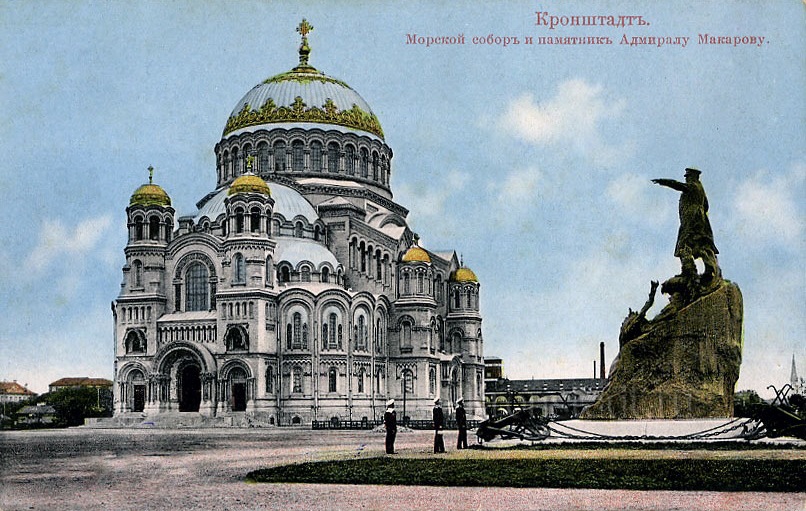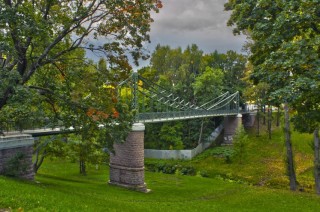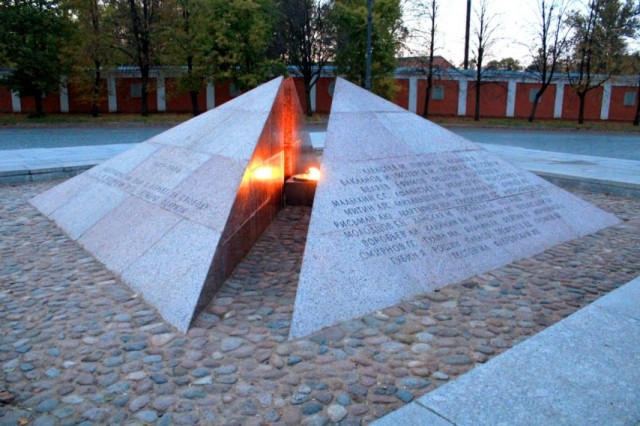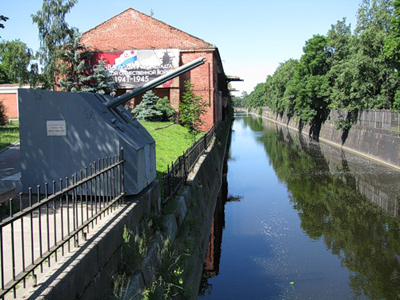The Anchor Square in Kronstadt.
The Anchor Square is the central square of the town. This name was borrowed from 18th century when territory around the Kronstadt Admiralty was used for keeping old anchors and another ship equipment. The square was not a embellishment of Kronstadt. But the situation completely changed in the late 19th century when construction of the memorial Naval cathedral started . There was made a decision that old Anchor square would be the best variant for the cathedral's location.
On the central part of the Anchor Square the Naval cathedral is located. It was built between 1903 and 1913 by V. Kosyakov. The Naval cathedral became the symbol of Kronstadt. Today, this church still marks a significant site by evoking memories of this architectural style. The giant Anchor Square lying directly in front of the cathedral contains a monument to the military hero, Stepan Makarov (1849-1904).
 The Anchor Square in Kronstadt, photo, beginning 20th century.
The Anchor Square in Kronstadt, photo, beginning 20th century.
Makarov was highly decorated for his service as a captain of the Russian torpedo boat tender Velikiy Knyaz Konstantin in the Russo-Turkish War of 1877–78. He was one of the first to adopt the idea of torpedo boats and he himself went to action in torpedo boats. On January 16, 1877 he was first in the World to launch torpedoes from a boat (which itself was launched from a tender) against an Ottoman Navy ship Intibah. Also the first icebreaker in the World (“Ermak”) was proposed oversaw Makarov’s construction, and he commanded “Ermak” on two Arctic expeditions in 1899 and 1901.
Stepan Makarov was commander of the Russian Pacific Fleet during the Russian-Japanese war. He tragically fell in battle in 1904 .

The southern border of the Anchor Square is the artificial drainage canal and a special pool for water from the dockyard. It used for drying of the dry dock of Peter I.
Great number of historical events happened here. During the Russian revolutions in 1905-1907 and 1917 crowds of people gathered to protest against the political regime.
In the late February 1917 more then 40 Naval officers (include the Naval base commander R. Viren) were killed just on the Anchor Square under the Makarov bridge. It was not surprisingly that Leon Trotsky called Kronstadt sailors the "pride and glory of the Russian Revolution”. Four years later on March 1 1921, a general meeting of the garrison on the Anchor Square of Kronstadt was held. There were more than 16 000 people include the citizens and sailors. It was the beginning of the Kronstadt rebellion – one of the most bloody event of the Russian Civil war. The Bolsheviks won, and now we can see the monument to the victims of the Revolution with the eternal flame.

During the World War II Kronstadt played a key role in the battle of Leningrad. The Naval cathedral used as the observation point and there were guns on the square. Kronstadt was conferred the status of “City of Military Glory” by the President of the Russian Federation Dmitriy Medvedev on April 27, 2009, for “courage, endurance and mass heroism, exhibited by defenders of the city in the struggle for the freedom and independence of the Motherland”. The wall of Kronstadt Admiralty was converted into a monument to crews of the ships, gunners and all who fought against the Nazis.
Unique cast-iron pavement is situated on the Anchor Square. Idea was borrowed in the USA in 1850-s. It was very expensive to use the cast-iron blocs for paving, but in fact it became economically profitable because more than 150 years pavement need no renovation! During the war, many cast-iron pavements were melted into the shells, but one area at the Anchor square and one of the bridges of Kronstadt were saved.
However, the real anchors can be found at the Anchor square. Two anchors, section of armor and twin artillery mount from the battleship "Oktyabrskaya Revolutsiya" ("Gangut") are located here. Ivan Tombasov, sailor, was a commander of this twin artillery mount during WW II. On April 1943 the battleship was attacked and the fire started. Tombasov throw out burning shells to prevent the detonation of shell warehouses at battleship. The last shell blown up in the Tombasov’s hands. He died but the ship was saved. In memory of this feat, Ivan Tombasov gun was saved as a monument of courage and dedication.

The bridge through the Obvodny canal connects the Anchor square with the Soviet (Sovetskaya) street.





